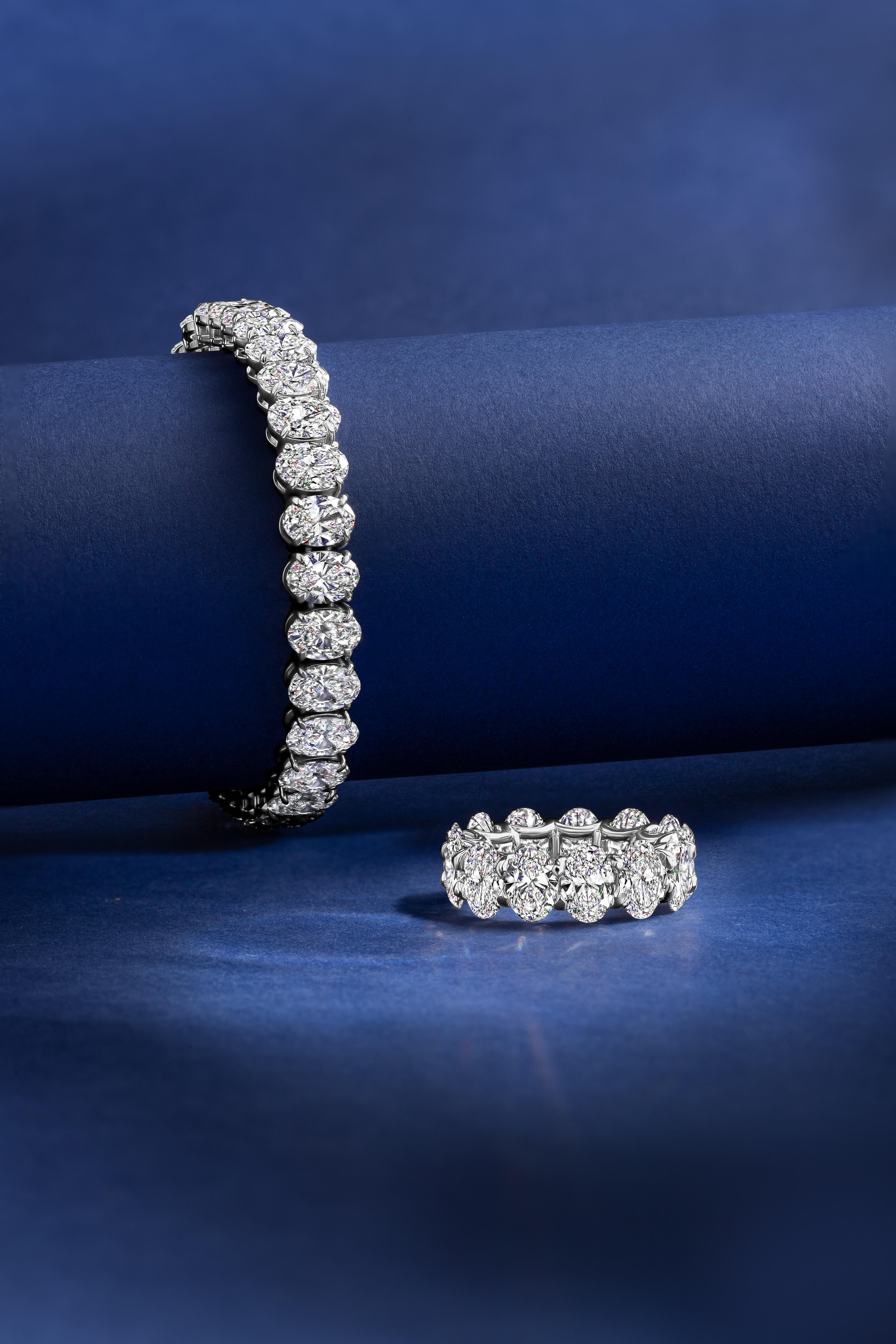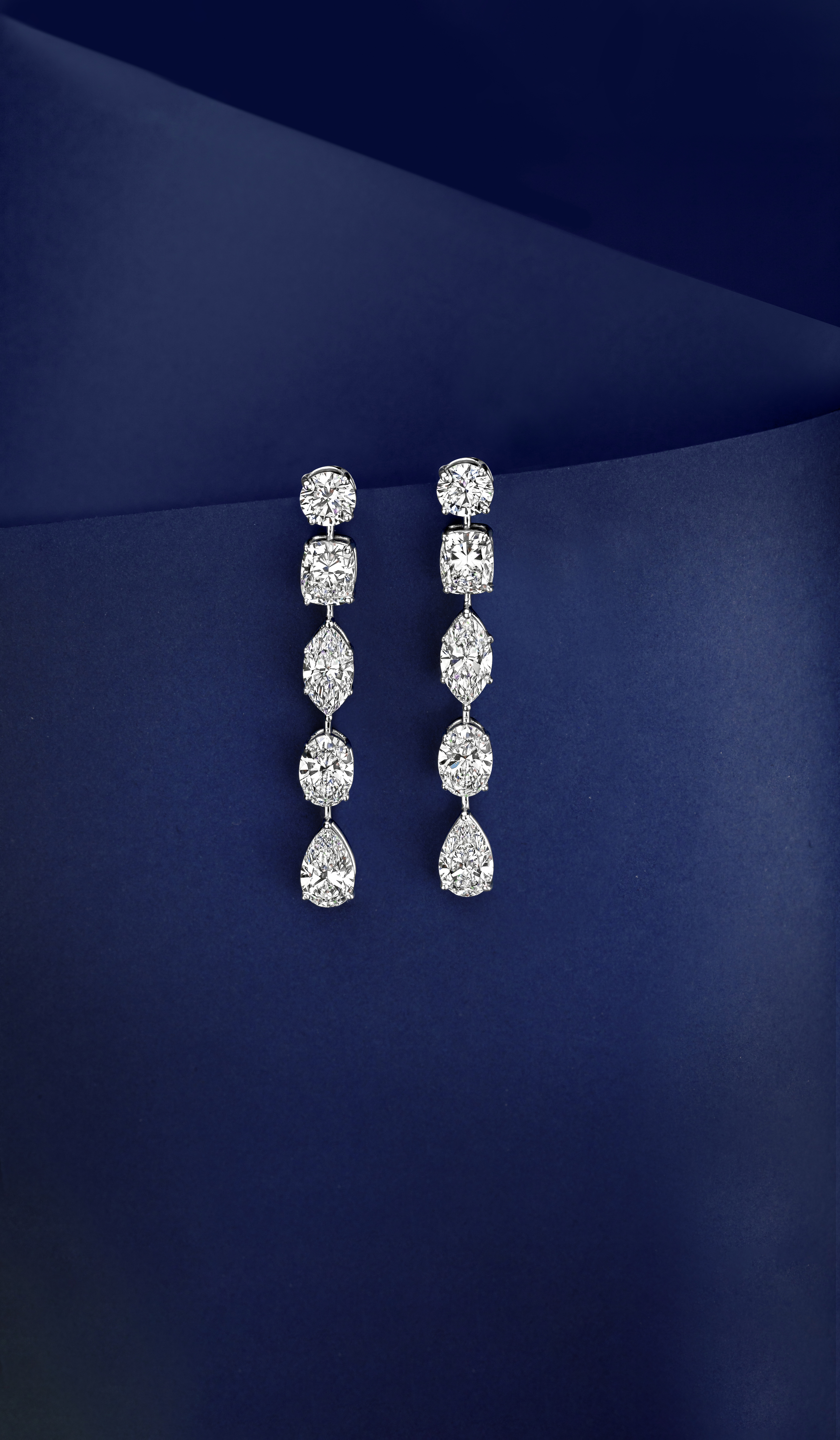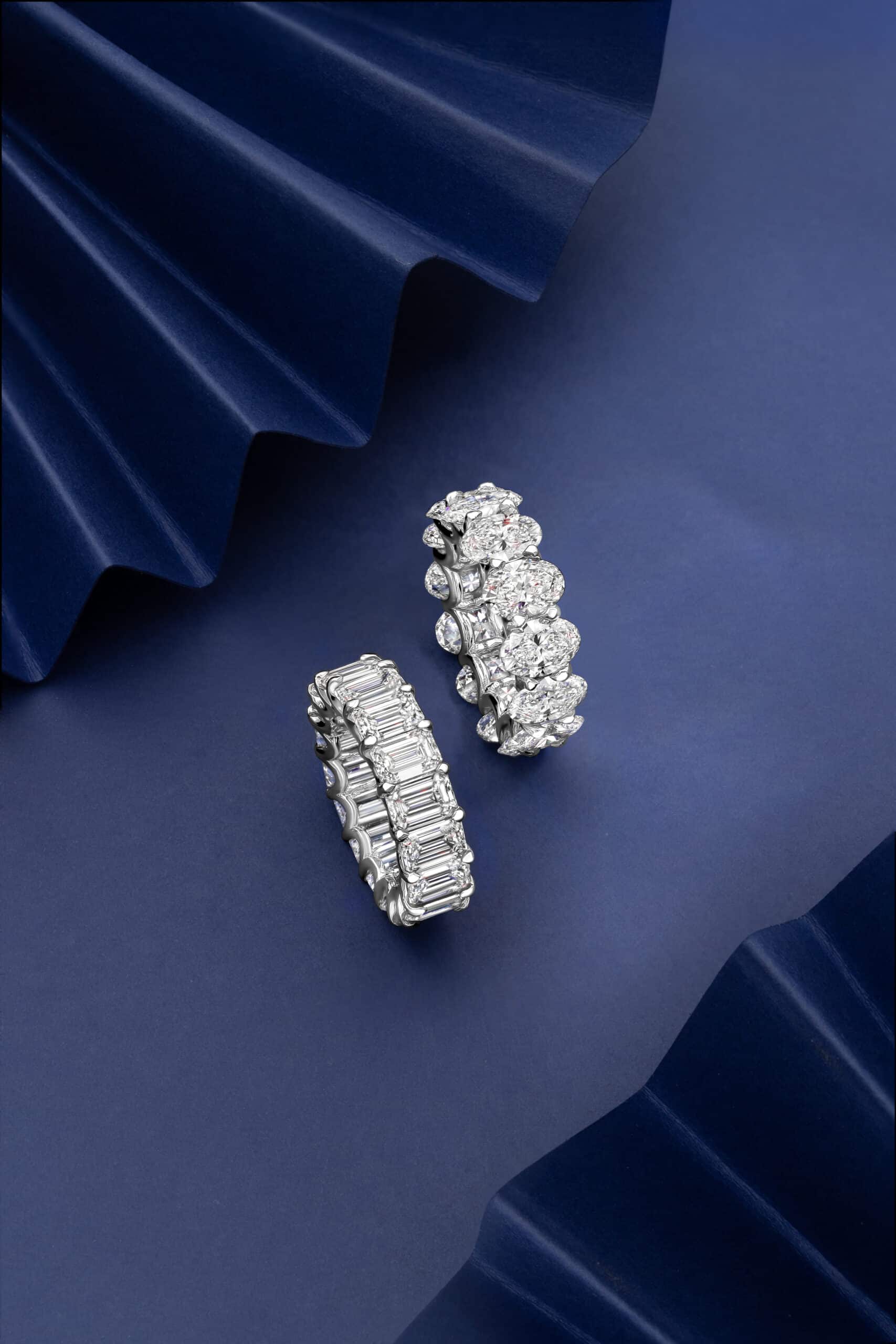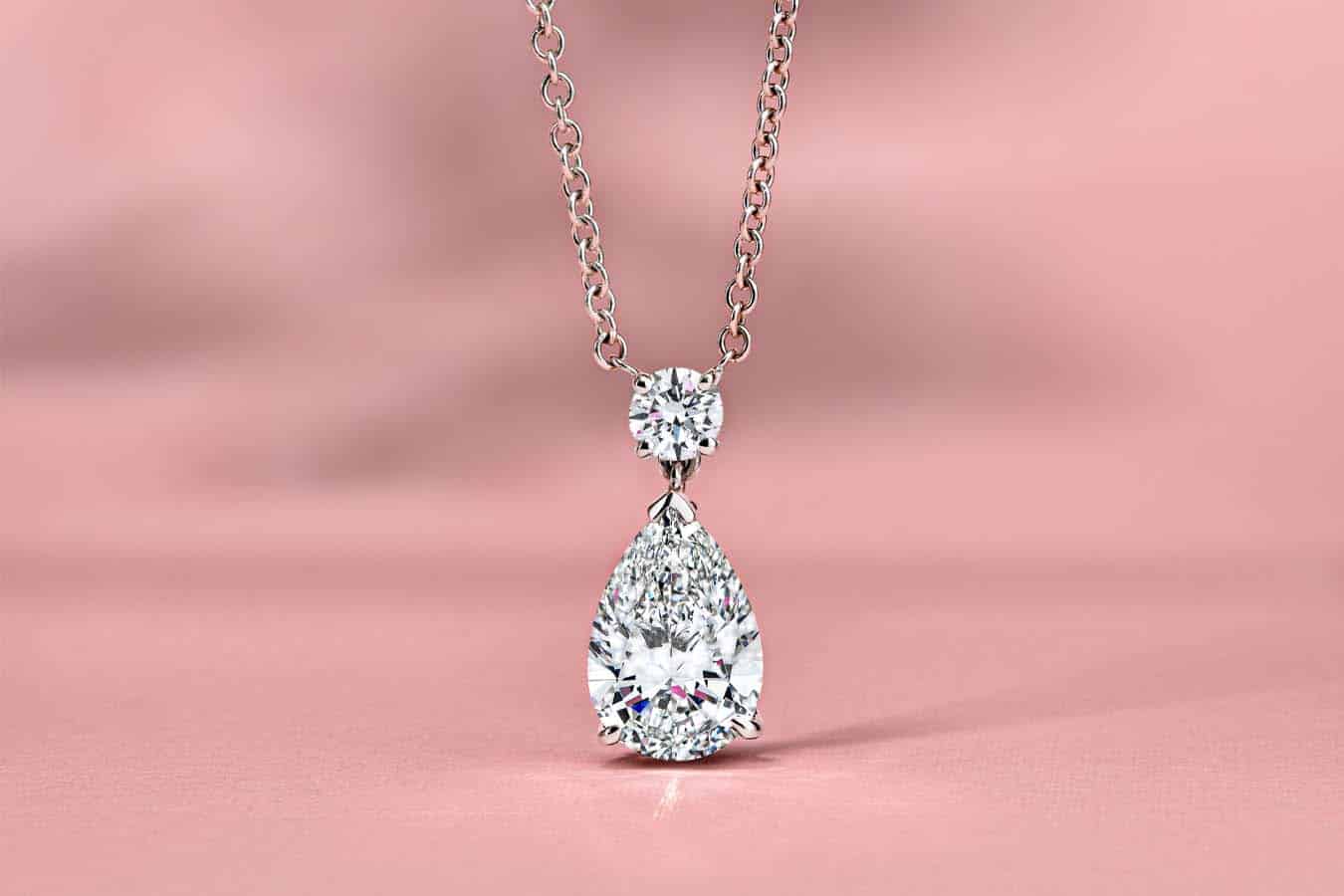With lab-grown diamonds becoming more and more popular, it was about time we got, and gave you, the run-down!
With one camp of people claiming ‘There’s no difference between regular diamonds and lab-grown diamonds!’ and naysayers responding with ‘So what’s with the price discrepancy?!,’ there’s no denying that more and more people are learning about, and turning towards, lab-grown stones. And so, to get clarity once and for all, we turned to Avraham Lipschitz, diamond expert and CEO of Gemuine Jewels. Mr. Lipschitz has been in the diamond industry for over 30 years. He’s seen diamonds at every stage: from when they’re mined from the ground, to when they’re expertly cut and polished, all the way to when they’re fitted for your dream piece.
‘There’s one key difference between a traditionally grown and lab-grown diamond,’ explained Mr. Lipschitz, ‘and that’s the way they’re grown. Traditionally grown diamonds are mined from the ground, requiring workers, equipment, and time, all things that contribute to a naturally grown diamond’s high price. Lab-grown diamonds grow from the seed of a diamond planted in a growing box: in a highly controlled environment that doesn’t require that mining cost. And that’s it. That’s the only difference.’

I’ll be honest, I was still a little skeptical. Mr. Lipschitz continued, ‘Everything else is the exact same. It’s the same process to manufacture, same process to certify. Naturally and lab-grown stones are polished and cut the exact same way, using the exact same machinery. It’s a carbon copy of a naturally grown stone. And with the incredible price difference, people are finally catching on. Now, for every naturally grown stone I sell, I’m selling 8 lab-grown diamonds.’

I probed a little more about that price difference, and Mr. Lipschitz gave a few examples. One customer wanted to buy a 3.5 carat pendant: it would have cost $65,000 for a natural stone, and she spent $9,000 on a lab-grown diamond. Another couple wanted studs: they studied the lab-grown and natural diamonds and instead decided on lab-grown, paying $6,000 instead of $50,000. And again, he clarified, the difference in price is the cost of mining that stone. The diamond’s beauty, it’s wear and tear, and everything else, is exactly the same.

Do you want to learn more, or want to find your own lab-grown diamond piece? Gemuine has a stunning line of ready-made pieces: think engagement rings, eternity rings, wedding earrings, studs, pendants, tennis necklaces and bracelets, and their specialty: your dream piece, custom-made. Gemuine Jewels sells from Boro Park and Jackson, with locations opening in Monsey and Crown Heights, and a website coming soon! Until then, reach out to Mr. Lipschitz at Gemuine Jewels by phone at 732-952-9033, by WhatsApp here, or by email at info@gemuinejewels.com.





One point that wasn’t addressed, what is the value of a lab-grown diamond? Is there a re-sell value?
1) You’re saving SO much $ wen u buy it. so who cares about resale value?
2) if u spend $40,000 on a piece of jewelry, u will never be able to sell it for $40K, it will drop substantially. Why would u buy jewelry with thinking about resale value? Buy it to enjoy it. Labgrown doesn’t break the bank, it’ll be easier to enjoy.
A diamond dealer told me that as soon as a diamond leaves the jewelers hands the price drops significantly. Regardless of mined or lab grown status. Rather a bigger lab grown stone IMHO.
I second that I would also like to know what the resale value of a lab grown diamond is. Would a traditional grown diamond re sell for more????
Yes of course
Just to note that in the general market, lab grown diamonds have been going down in price month by month due to the influx of them.
Supply vs Demand.
We are not seeing these changes in the frum market as resellers don’t want to lower the prices, but really lab grown are going down in value very quickly as it’s so easy for them to be produced and soon won’t be worth much at all. Just be aware!!!
-The daughter of a diamond dealer (who is very knowledgable in the field)
Perfect, can’t wait for it to go down more. If it looks the same as a diamond, I’m good with it regardless.
I wanna buy a tennis and so confused, I do see that price on lab grown went down a lot , I wanna buy for a kallah , and really I believe for my budget the kallah will be happier with a showee lab grown , than smaller real diamond
“The difference in price is due to the cost of mining” is a very misleading statement – the reason why diamonds are expensive is because they are rare.
So there will always be those that want the real thing. But once they are on the shelf. Can a diamond dealer tell the difference? Is there a way for him to know at a glance or does that require in lab testing?
I was told that each lab grown diamond says lab grown in microscopic letters that can only be seen with a loup. similar to how each mined diamond has a certification number that can be seen with a loup. so yes, a jeweler will always be able to tell a difference.
Since the article is a bit misleading it is very important to clarify- lab grown diamonds have 0 resale value. As cheap as they are to begin with in comparison to earth grown diamonds, they lose almost their entire value once they are out of the dealers/sellers hand.
Their value has been plunging in the past years since they’ve been introduced into the diamond/jewellery industry (they generally sell at 30% cost of earth grown at this point).
It is impossible to tell the difference between the two to the naked eye, even the most professional diamanter would need to use equipment to do so, and would need to be very knowledgeable in the chemistry of diamonds to tell the slight difference without using mechanical equipment).
But if you’re concerned about the value- it is only to the owner that uses it for as long as he does.
Written by a 3rd generation diamond manufacturer, who’s been considering buying a lab grown diamond piece for her personal use as well…